Make a perfectly fitting pattern using only your hip and bust measurements? Could this be true?
In my quest to create clothes that fit, I’ve become intrigued by a pattern making system that claims to be: “Astonishingly simple, you need only two measurements to make an excellent fitting pattern every time.”
It does sound too good to be true. It’s called the Lutterloh System and, no, this is NOT a paid advertisement for them. However, I checked out their video demonstration and it looks like it just might work.
I’m just curious if any of you have ever tried this system and if so, what did you think of it? It would be an investment to purchase and I don’t want to spend money on something that doesn’t work.
If you haven’t tried the Lutterloh System, but perhaps something else has worked well for you, would you let me know? I really appreciate your comments!

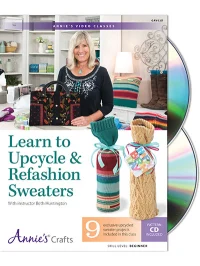


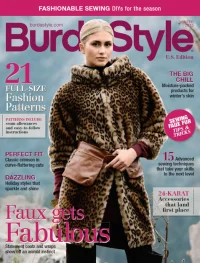















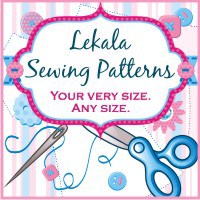

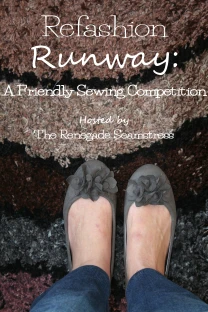






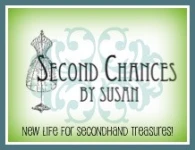






I was intrigued with the Lutterloh system, too, and their video made sense to my logical left brain. After doing a little more research, though, I think I read that you have to use their patterns, as well, and that they don’t have many to offer. This was a while ago so I might be off but that seemed to be the chronic complaint. Maybe someone else will have more accurate info. What does PR say about it? That’s usually advice you can trust…
It does seem to make sense, doesn’t it. I’ll check what PR says about it, but I have to embarrassingly admit I’m not sure what PR is.
One good thing about developing a pants pattern that fits, is that you can then use it to compare to other patterns. I do that a lot with bodice patterns – I just use my own tried & true neck and shoulder shape in place of the one on the non-fitted pattern.
I got my earliest T&T pants patterns from RTW. When then wore out, I used a seam ripper to gently dismantle the pants and use those pieces as a pattern. Bonus- by keeping one half fully constructed, I referred to that for construction techniques.
Bernina My Label works for me- not cheap but worth every penny to me.
And StephC is offering a consulting dressmaker service. For a small fee, she will draft a pants block for you, her blog is 3 Hours Past:
StephC
Thank you Robin! I think I’ll try to dismantle a well fitting pair of pants and use it for a pattern. I’ll also check into Bernina My Label and 3 Hours Past. I really appreciate you taking the time to respond. Have a great Tuesday!
Beth
I have heard of the Lutterloh system, but like Robin I used rtw pants, took it apart and use it against the pants pattern for a good fit. Also did the same thing with an old wrap dress. So far it is working for me and have made 12 dresses from my rtw dress template and 4 pairs of pants. What I will say is the fabric you use dictate whether further tweaking is needed, despite the initial tweaking of the pattern against the rtw garment, but its minor adjustments.
Thank you so much Sheila! It looks like I’m going to have to take apart a RTW pair of pants and just try it. That’ll save me some $$$$$ too. 🙂
Beth, maybe you don’t need to take apart your pants. There’s a book that explains you exactly how you can avoid it.
Patternmaking for a Perfect Fit: Using the Rub-off Technique to Re-Create and Redesign Your Favorite Fashions by Steffani Lincecum.
You can see it in action here http://wardrobereimagined.blogspot.com/2011/10/how-to-copy-ready-to-wear.html
If you are a visual learner, you can try Jean-ius the most recent Craftsy.com class by Kenneth King. I signed up but haven’t started it yet. it’s 39.99 USD with discount. Let me know if you need the code.
Thanks for stopping by at my blog, it’s nice to meet new readers
Thank you so much. I checked out the blog you suggested and it’s just what I needed! I can’t wait to try those techniques. Next I’ll try to get the book.
I bought the Lutterloh system over 20 years ago and used it a few times. I don’t sew much any more but I did make a skirt and it did fit. But for the price, unless you are sewing a lot and don’t mind spending a lot of time making the pattern, I don’t think it’s worth the investment.
One suggestion I can make is find a pair pants that fit well, take them apart and make a pattern. That being said, you do need to use the same weight and type of fabric.
Thanks so much for your input and suggestions! Many people are suggesting to take apart a pair of well fitting pants. I’m going to have to try this and I will remember to use the same type and weight of fabric. One question, do you still have your Lutterloh system?
In my pattern making experience (I’m sorry to admit it, but almost twenty years) it is not possible that using just hips and bust measurement you can make something perfectly fitting, unless you’re going to make something without any shape. To make something that perfectly fits you, lots of measurements are required depending on the kind of garment and the kind of shape you designed. Sorry.
I’ve never heard of this system myself, but am looking forward to seeing what loveliness you come up with 🙂
Mmmm. I’m not so sure that would cover all styles. I’m also not experienced with pattern drafting but there is a question of maths… and biology here! Asides from hip and bust, I’m sure I dont have the same length body or the same shoulder width, or the same upper arm shape as everybody. The mind boggles!
If you check out their video, it seems to make sense the way they do it. But I’m not a pattern maker so I’m not sure if I’m missing something.
Hi Beth! We were taught the rub off technique in design school too and its also great for kids clothing! I have to recommend a patternmaking textbook used for fashion students by Helen Armstrong. I believe its patternmaking for fashion design. Its available on Amazon. Once you make yourbasic blocks you can design anything and the book shows how. Lutterloh i have seen but never investigated. You also really need a dress form.
Hello, Anyone who is seriously interested in the Lutterloh System should join our Facebook group.
https://www.facebook.com/groups/176160562415518/
To ooobop! Regarding the length for long or short wasted people or for people with long or short legs please watch the video on our web-site (start at minute 10).
It’s a little late (hum, 4 years after) but I’m using the lutterloh system. English is not my language, so be patient with my bad syntax. With the two measures, you obtain a standard pattern with the benefice to directly adjust the size if you have two different sizes for your bust and your hip. If you need to alter a standard pattern for a good fitting, it will be the same with lutterloh pattern.
In my opinion, the main advantage are to have a very big stock of models who fits in little books. (Trust me, I have a 15 years collection of Burda and it takes boxes and boxes!). Also, because I have a plus size, with this system, it’s very easy to use any pattern. It’s a real feast! In my case, I don’t need a lot of alteration, just adjust the length (on the bust and on the legs) and check for the waist size. With the bust measerument, I obtain always the good fit for the bust and the sleeves holes.
To draw the pattern, it take about the same time than to copy a classic pattern (aka, a Burda pattern). But you need to be very precise. A small difference with an angle will be a big error at the end of the drawing. So, you need to check seriously the finished pattern.
Also, you have only the pattern and some symbols, so you have to know you way with sewing because you don’t have instructions.
In my opinion, it’s expensive but probably not really if you compare with the same amount of models from Burda.
If you sew a lot, and for several people, it’s a great source of models and inspiration, and the multisizing is marvelous. Otherwise, I’m not sure it’s a good investment, except if you buy on second hand.
By luck, I receive my set from a friend. The models are from eighties but I found also several booklets from seventies. I always find a basic model to suit my need and made only some alteration to refashion it. So far, I’m really happy with this system, also for children clothes (and I didn’t buy sewing revue or pattern, so, it’s an economy)
.